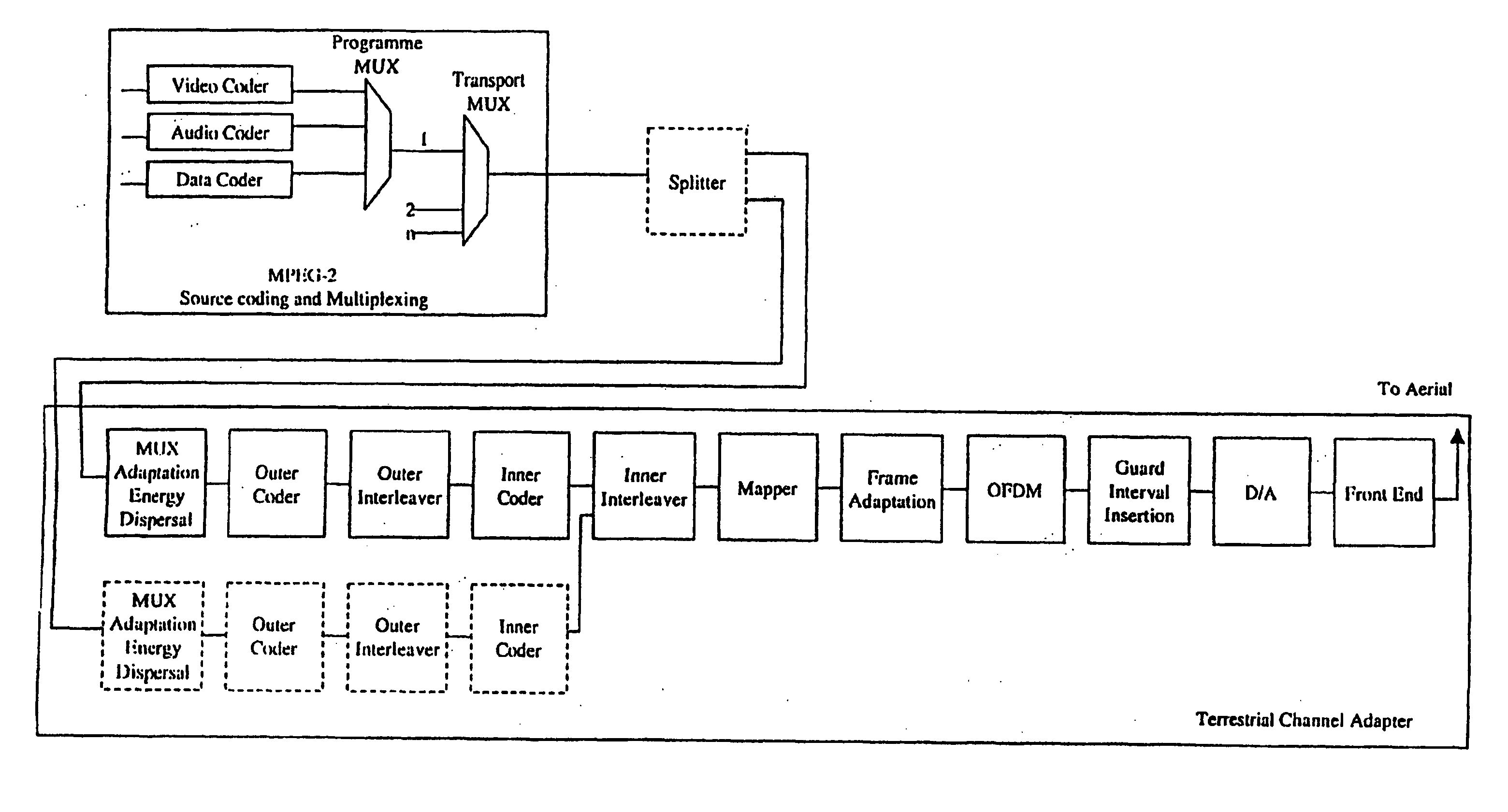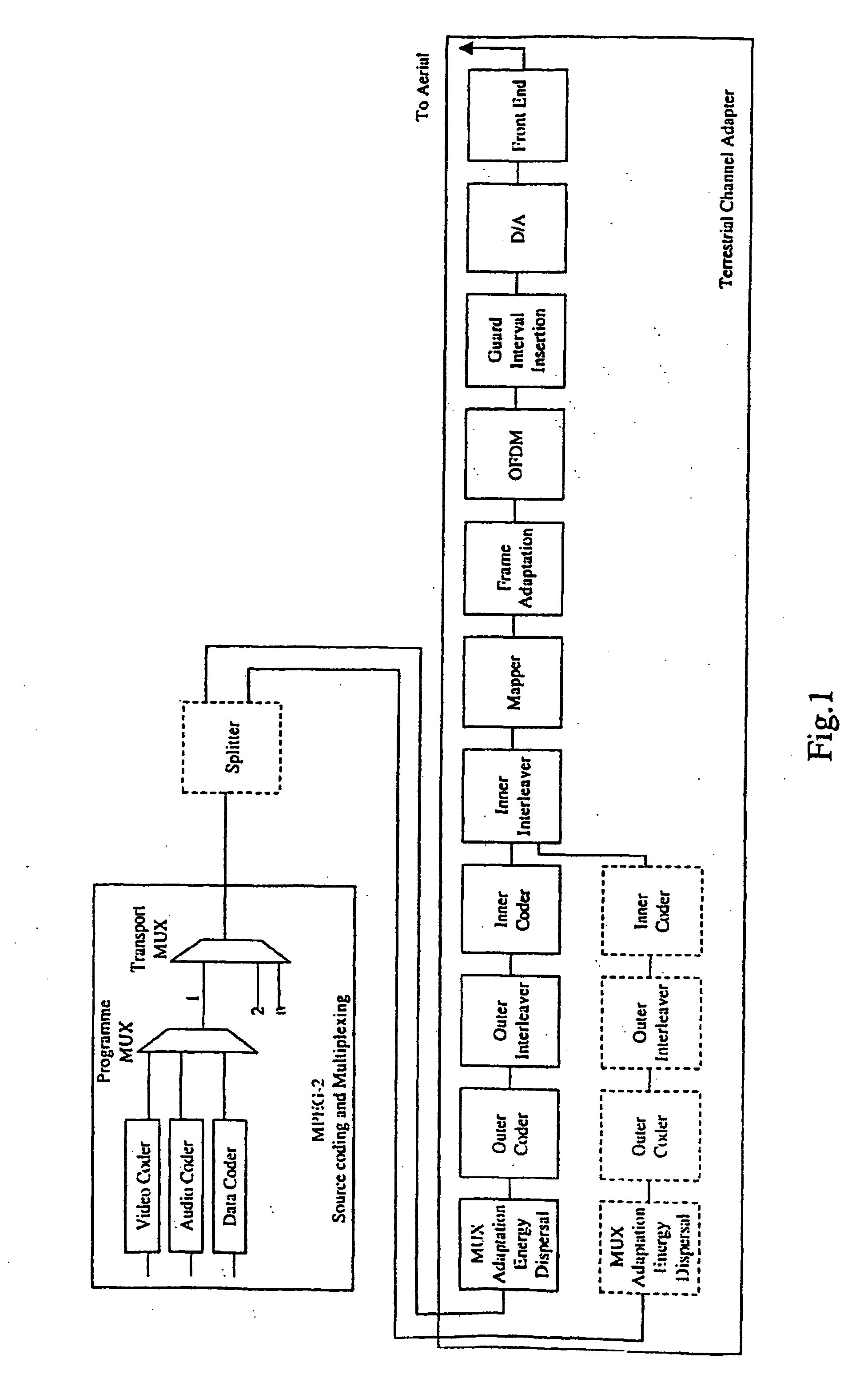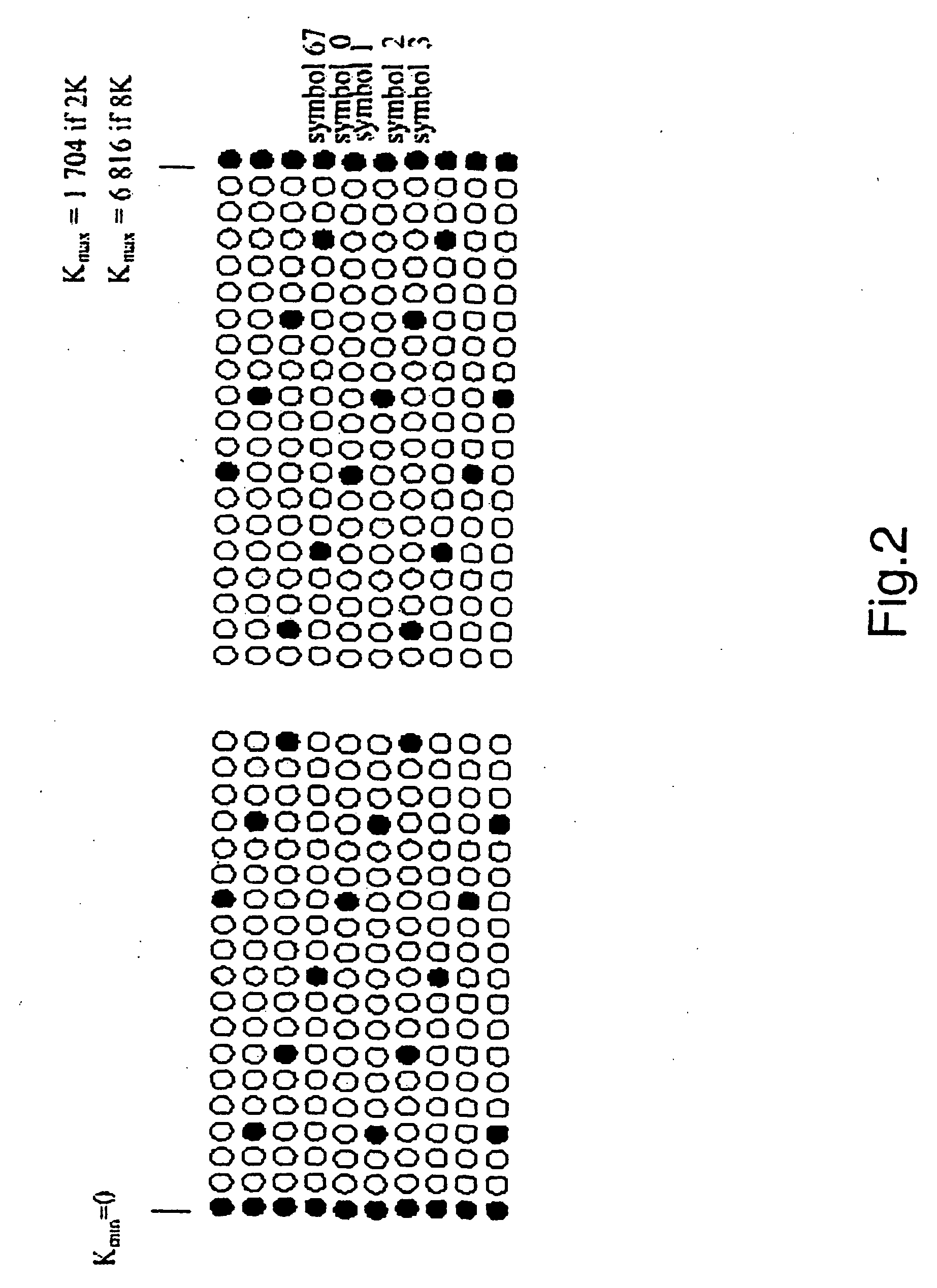Method and system for receiving a multi-carrier signal
a multi-carrier and signal technology, applied in the direction of payload allocation, digital transmission, transmission path sub-channel allocation, etc., can solve the problems of difficult broadcast reception, digital radio has not gained much acceptance on the market, and the content of digital radio is reluctant to be distributed via the intern
- Summary
- Abstract
- Description
- Claims
- Application Information
AI Technical Summary
Problems solved by technology
Method used
Image
Examples
Embodiment Construction
[0024] Preferable embodiments of the invention provide a method for reducing impulsive burst noise in less delayed reception, for example, in pilot based OFDM systems.
[0025] Some methods of the preferable embodiments contain following steps: 1) recognition of the impulse position and possibly length in the time domain symbol, 2) blanking of those samples of the symbol where significant amount of impulse noise is present, 3) calculating the first estimate of the received signal from the blanked symbol, 4) deriving correction values for the carrier estimates by applying prior information (such as pilot carriers), and 5) the corrected estimate of the received symbol is derived by subtracting the correction values of step 4 from the first estimate of carriers derived in step 3. Advantageously, the method and arrangement allow correction of fairly long bursts of impulse noise with minor degradation only. The complexity of the scheme and the additional energy consumption are fairly low. ...
PUM
 Login to View More
Login to View More Abstract
Description
Claims
Application Information
 Login to View More
Login to View More - R&D
- Intellectual Property
- Life Sciences
- Materials
- Tech Scout
- Unparalleled Data Quality
- Higher Quality Content
- 60% Fewer Hallucinations
Browse by: Latest US Patents, China's latest patents, Technical Efficacy Thesaurus, Application Domain, Technology Topic, Popular Technical Reports.
© 2025 PatSnap. All rights reserved.Legal|Privacy policy|Modern Slavery Act Transparency Statement|Sitemap|About US| Contact US: help@patsnap.com



